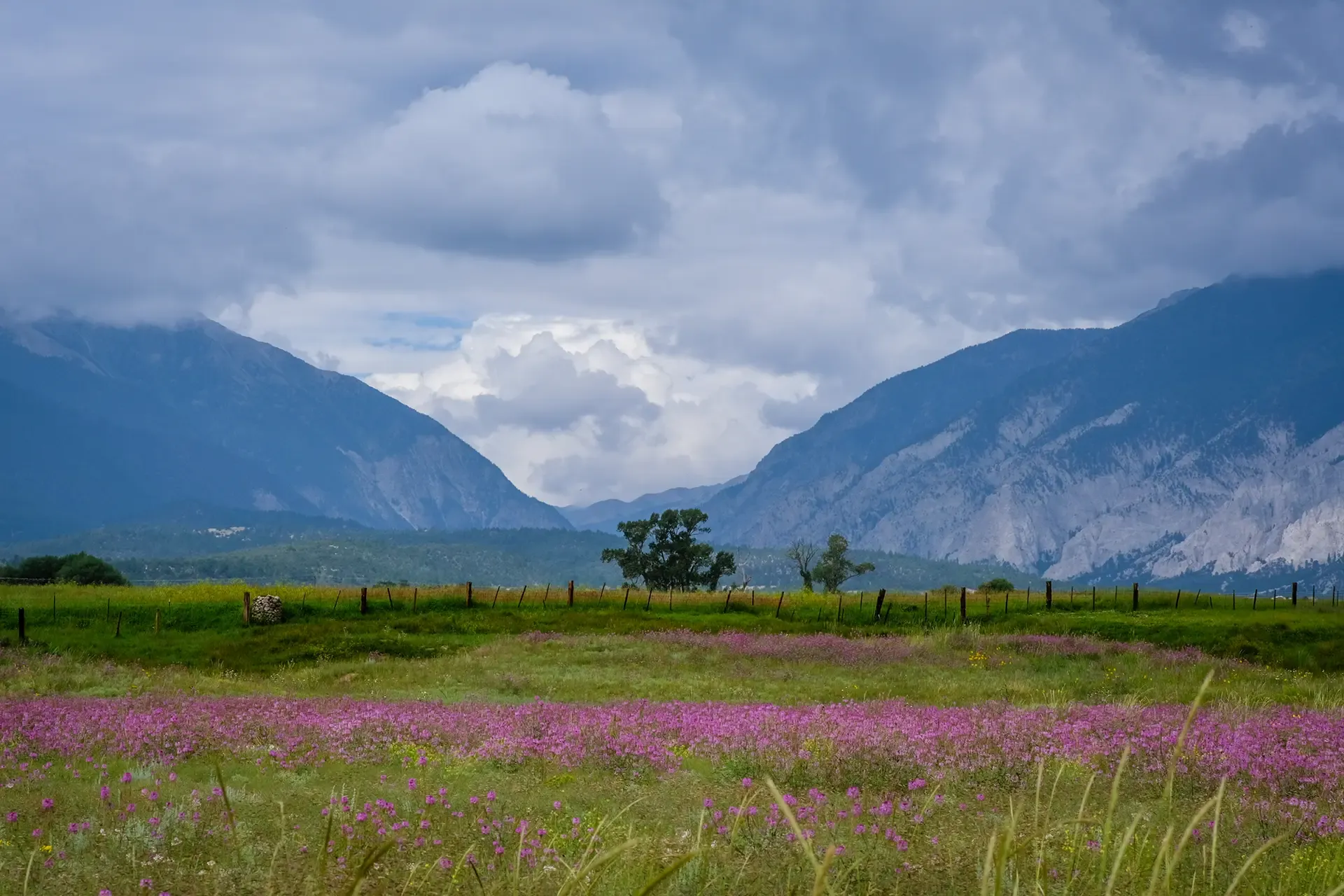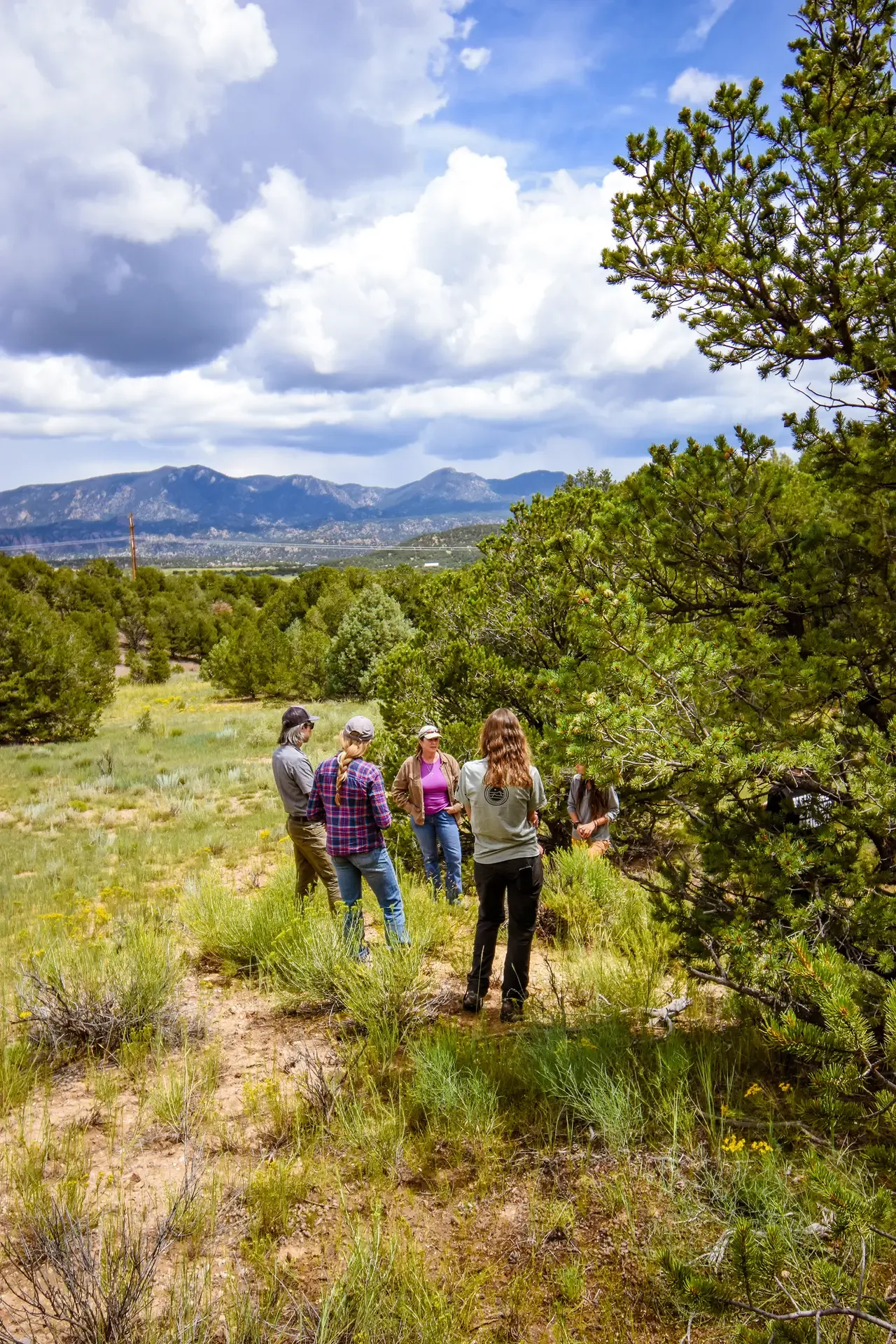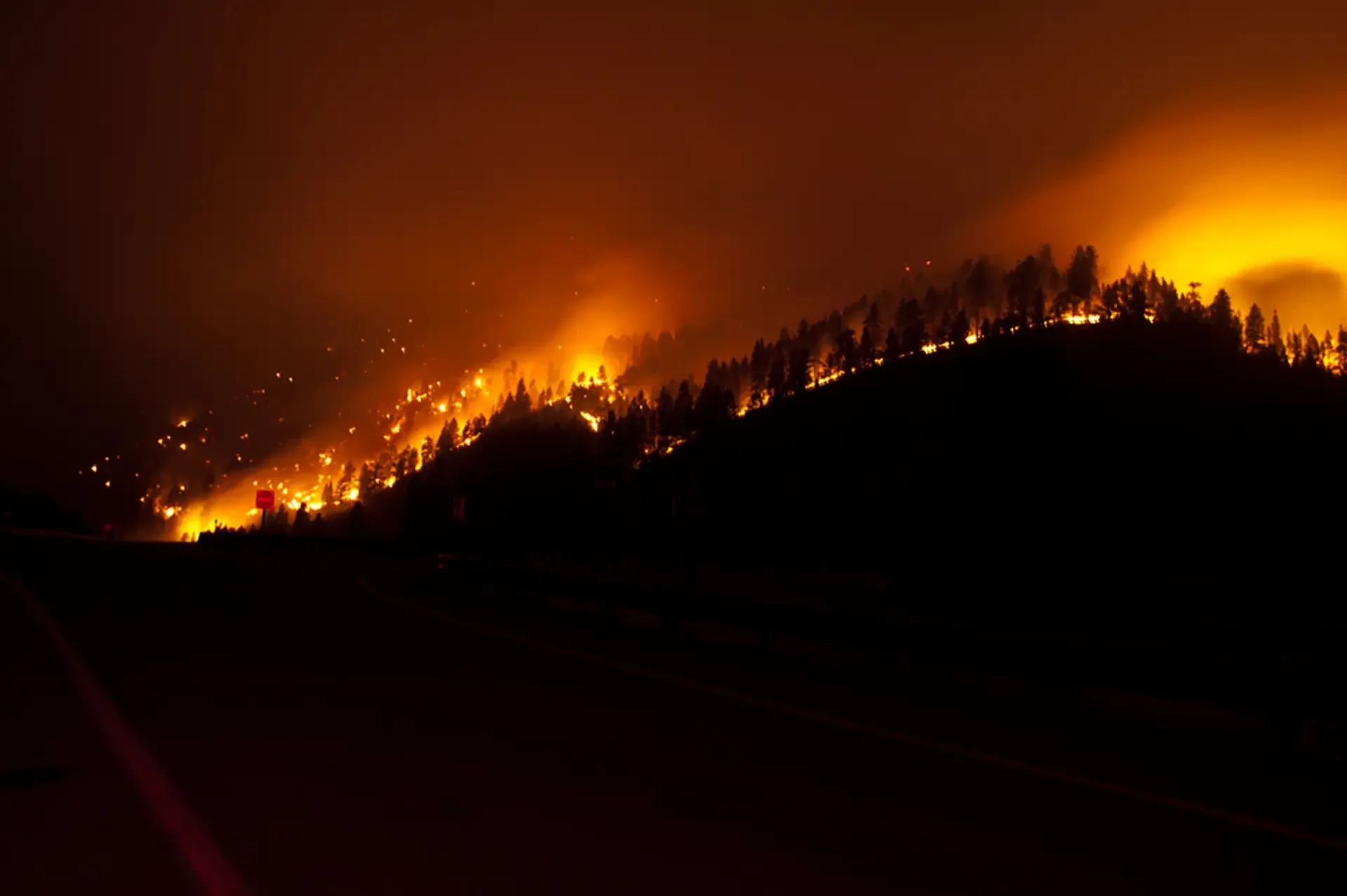Mitigating Wildfire Risk Out West

In August, a Google search revealed that the phrase "devastating wildfires" had appeared in more than 63,900 online news articles over the past few years, raising an important question: With climate change upon us, will there ever be another wildfire season that proves less than devastating than the last?
Recent history suggests that the answer is no, but with so much at stake, resignation isn’t an option. That’s why the American Forest Foundation (AFF) is working to empower family forest owners to take action. By reducing the amount of fuel on their properties, family forest owners can help force fast-moving fires to tap the brakes and lose some momentum. That in turn helps firefighters gain the upper hand and keep small wildfires from ballooning into catastrophic blazes.
Over the summer, the headlines from near and far painted a dire picture. The Dixie Fire was ripping through the Northern California counties of Butte, Plumas, Lassen and Tehama, burning more than 500,000 acres to become the second-largest fire in state history, trailing only last year’s August Complex fire, which burned more than a million acres.
Last year was the worst wildfire season in California’s recorded history, with 9,917 fires burning about 4.26 million acres, according to the California Department of Forestry and Fire Protection, known as Cal Fire. The 2020 wildfires in California resulted in about 112 million metric tons of carbon dioxide emissions, roughly the same as 24.2 million vehicles per year, according to a report from the California Air Resources Board.
Overall, families and other private entities own 51% of California's high-risk land, with the state's 202,000 family forest owners holding about 8 million acres of woodlands.
Meanwhile, wildfires raged across Oregon, Washington, Montana, Colorado and British Columbia this past August, conspiring to give Denver the second-worst air quality among the world’s major cities at one point.
Farther abroad, Greece, Italy, Turkey, Algeria and Siberia were all dealing with a record wildfire season, just as a landmark report from the United Nations warned of dire consequences if the world doesn’t drastically reduce greenhouse-gas emissions. The whole world, it seemed, was aflame.
"We’ve seen during this century how the threat from catastrophic and high-intensity wildfires has completely exploded," said Jillian Dyszynski, AFF’s director of market development. "This is a new kind of fire regime that we’ve never experienced. It’s definitely a wicked problem."
Data-Driven Decisions
Scientific modeling shows that in many high-risk areas, treating only 20% to 40% of the forestland in a given landscape would be enough to slow down wildfires and reduce their intensity, which would help to save lives and property.
Building on this understanding, AFF recently commissioned a research project aimed at quantifying the financial value of those fuel treatments. The work takes into account a number of factors – such as historical fire data, the amount and type of fuel in the forest, meteorological data and the land’s proximity to homes and businesses – to help land managers identify where to get the biggest bang for their buck.
"Fire risk reduction is expensive work," said Tom Fry, AFF’s Western Director. "The fact of the matter is that there isn’t enough public funding to tackle all the risk. Prioritizing limited funding will only take us so far. We have to make a business case for private sector investment."

Photo courtesy of Big River Collective.
This first-of-its-kind work suggests that fuel-reduction projects would essentially pay for themselves within three to seven years by helping to reduce the size and severity of fires, with annual reductions in losses to residential infrastructure alone of 21%-58%.
Since wildfires don’t respect property lines, California and across the West, diverse group of landowners must work together to make forestland more resilient. That includes federal, state and local governments, corporations, Native American tribes, and other private entities. But the role of family forest owners cannot be overstated.
Overall, families and other private entities own 51% of California’s high-risk land, with the state’s 202,000 family forest owners holding about 8 million acres of woodlands. But since the average family-owned forest in California spans less than 100 acres, it’s essential to bring them together to address wildfire risk in a meaningful way. This is true across the American West.
A Worsening Problem
Extirpating fire from Western forests for over a century has led to an unprecedented buildup of fuels that would otherwise be checked by periodic, low-intensity fire. Fed by this fuel and acerbated by climate change, there seems to be no question that fire seasons, on average, are getting worse.
Once a wildfire starts out West, it typically has all the fuel it needs to get out of hand. Of the 20 most destructive fires in California history, 12 have occurred since 2007, illustrating the impact of long-term drought and climate change. This pattern holds true for other states across the West as well.
Suburban sprawl is another culprit, as the national housing shortage leads to more homes in what’s known as the wildland/urban interface. The WUI is a zone of transition between backcountry and land developed by people – the area where a built environment meets a natural environment.
Across the United States, homes in recent wildfire perimeters grew to 288,000 in 2015 from 177,000 in 1990, according to the U.S. Forest Service. Moreover, overall home growth in the WUI grew 41% from 1990 to 2010, the agency said. With boundaries between woodlands and housing developments rapidly disappearing, any significant wildfire poses an imminent endanger to California residents.
According to the Munich Re Group, or Munich Reinsurance Co., wildfires in the U.S. last year resulted in $11 billion in insured losses, or approximately 16% of total insured losses from natural disasters. With wildfire season growing more dangerous and getting longer each year, insurers and reinsurers now consider wildfires to be a "primary peril," or among the leading causes of loss, in many regions. It’s a significant change for the industry and has led to higher insurance premiums for homeowners or outright non-renewal of policies.
"We've seen during this century how the threat from catastrophic and high-intensity wildfires has completely exploded," Jillian Dyszynski, Director of Market Development at AFF.
Family forest owners can help to mitigate the threat of wildfire by thinning their forests and removing small-diameter trees to provide for better spacing. Cutting off lower branches reduces the risk of a crown fire, which engulfs treetops and is considered the most intense type of forest fire. Crown fires produce large embers that can travel great distances in windy conditions, quickly spreading the fire to nearby areas.
Cost Considerations
For family forest owners wanting to be good stewards of their land, the two main obstacles are a lack of technical expertise and the high cost of land treatment. According to AFF, the cost of fuel reduction can average $1,000 to $2,500 per acre, putting treatment financially out of reach for many families.
The U.S. Forest Service estimates that across the West, there are about 52 million acres of privately owned land at moderate to high risk of wildfire and needing treatment at a landscape scale.

But at $1,500 an acre, the price tag is a hefty $31.2 billion for this private lands work alone. By way of comparison, the U.S. government funded only $639 million in fuel-reduction projects last year, largely on federal lands. And that’s before accounting for periodic maintenance needed to remove unwanted vegetation from treated acres once it grows back. "We don’t have to treat every acre at risk," said Dyszynski, "but we do have to treat enough acres to slow these fires down. Paying for it is a whole other ball of wax. That’s why making the business case is so critical to crowd in the necessary funding."
Getting to Scale
AFF launched its My Sierra Woods program in 2019, one of several across the West. The outreach initiative uses social media ads to target family forest owners in 12 Northern California counties – Shasta, Tehama, Modoc, Siskiyou, Trinity, Butte, Yuba, Lassen, Plumas, Sierra, Nevada and Placer – where 45% of the land is forested and 42% of those acres are privately owned.
Landowners who respond are typically connected with a consulting forester who will visit their land free of charge and outline treatment options for them. Foresters also help landowners determine if their fuel-reduction projects are eligible for funding.
Through July, My Sierra Woods had engaged with about 1,000 family forest owners and had connected about half of them with a consulting forester. The program had helped to fund fuel-reduction work on approximately 10,000 acres, with 5,000 more acres scheduled to be treated by the end of March, according to Chantz Joyce, AFF’s California conservation manager.
Lack of technical expertise is another major barrier facing family forest owners. These landowners benefit when they have access to foresters who can help them create management plans.
"Given the scale of the West’s fire crisis and the increasing demand for forestry expertise, we need to have more boots on the ground to help landowners manage their risk," said Natalie Omundson, AFF’s senior Western conservation manager.
In places like northeastern Oregon, AFF is trying to understand how to achieve just that. In Oregon, many foresters need to devote their summers to fire duty, so having a diversified pool of foresters is crucial for increasing the speed and scale of active forest management.
AFF is piloting efforts there so that when foresters are unable to provide assistance to landowners, family forest owners can connect with another local consulting forester. By supplying landowners with management plans necessary to access financial assistance programs, AFF hopes that more landowners will be able to complete treatment activities to reduce fire risk on private lands.
Beginning the Next Phase
Next spring, the focus of My Sierra Woods will shift to Tuolumne County, near Yosemite National Park, with the goal of reducing fire fuels across 5,000 acres in the "Martinez fireshed," east of Sonora, California, according to Joyce. The area features 245,000 acres of oak woodlands and conifer forests, with 52% of the land owned by private landowners with at least 10 acres apiece.
To meaningfully reduce the risk of a catastrophic wildfire in the Martinez fireshed, AFF estimates that fuel-reduction treatment is needed for 50,000 to 100,000 acres or 20-40% of the landscape area.
Across the West, AFF places a strong emphasis on engaging private landowners adjacent to state or federally owned forestland. By coordinating the fuel-reduction efforts of family forest owners and government agencies overseeing public land, AFF can help to establish vast swathes of treated land.
"As we start to add up those smaller landowners, you see that they own a significant amount of property in a given county or watershed, and they can really have a huge impact on improving the forest health in their immediate area," Joyce said.
"By deploying landowner-engagement strategies tested across the West and Northern California in particular, working closely with local partners to connect landowners to or directly provide landowners with both technical and financial assistance, and ultimately help dispose of fuels, AFF aims to create a model of concentrated, landscape-scale, cross-jurisdictional fuel reduction that can be replicated across the West," he added.
"Ultimately we want to show how to get to "done" at a landscape scale. That’ll take empowering family landowners to act, working closely with public land managers, and crowding in enough funding – public and private – to get enough of the right acres treated that the land is ready for the next fire season," Fry concluded.
Those businesses may individually lack the forestry expertise needed to maximize the effectiveness of their fuel-reduction efforts. But armed with AFF’s data-driven scientific modeling, they can determine the most critical areas to treat.
How You Can Help
These complex challenges can’t be solved by any single group acting in isolation, but a great deal of this work relies on philanthropic support from people like you to explore solutions and test strategies across the West.
When you make a generous gift to AFF, you are helping to identify solutions to our most pressing conservation challenges, like mitigating devastating wildfires. Every time the vital contributions of family forest landowners and their forests are valued and supported, we get one step closer to overcoming these challenges.